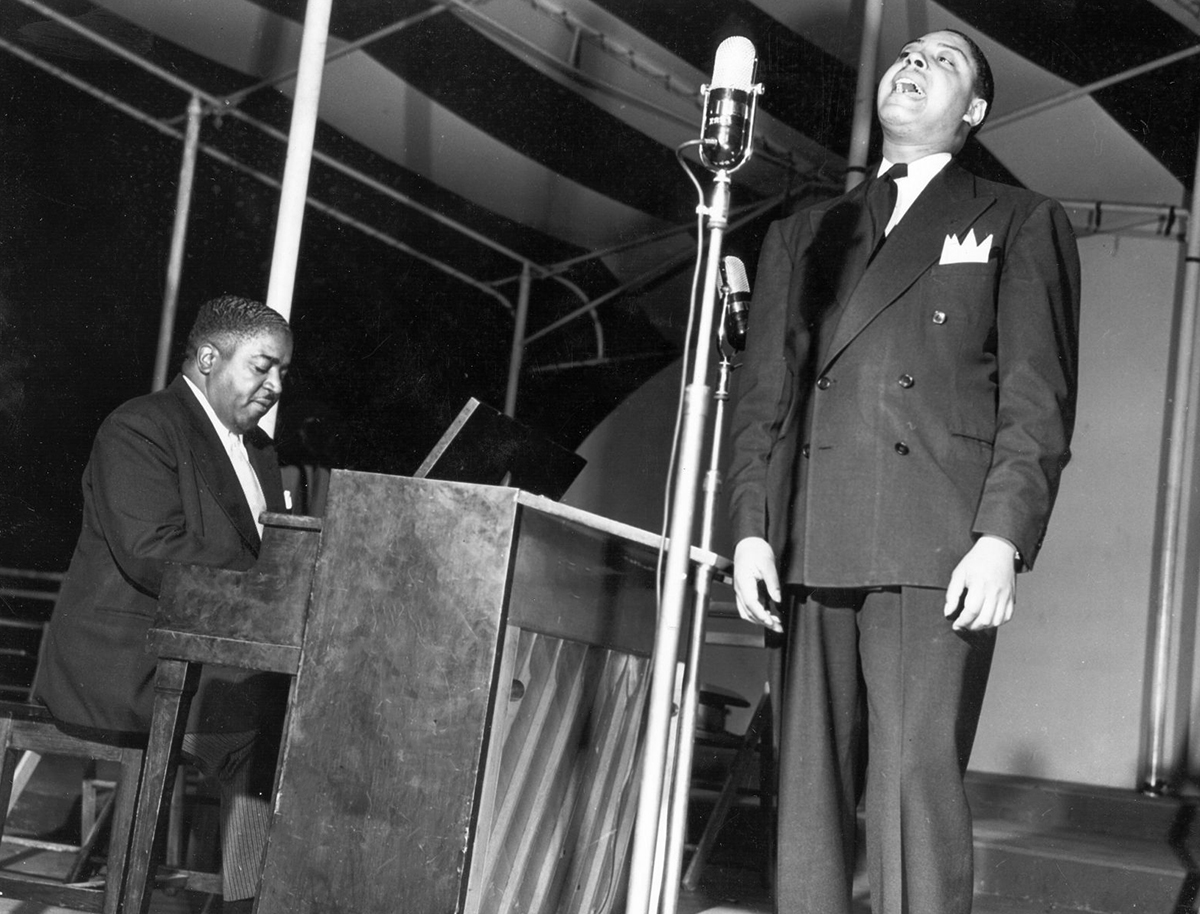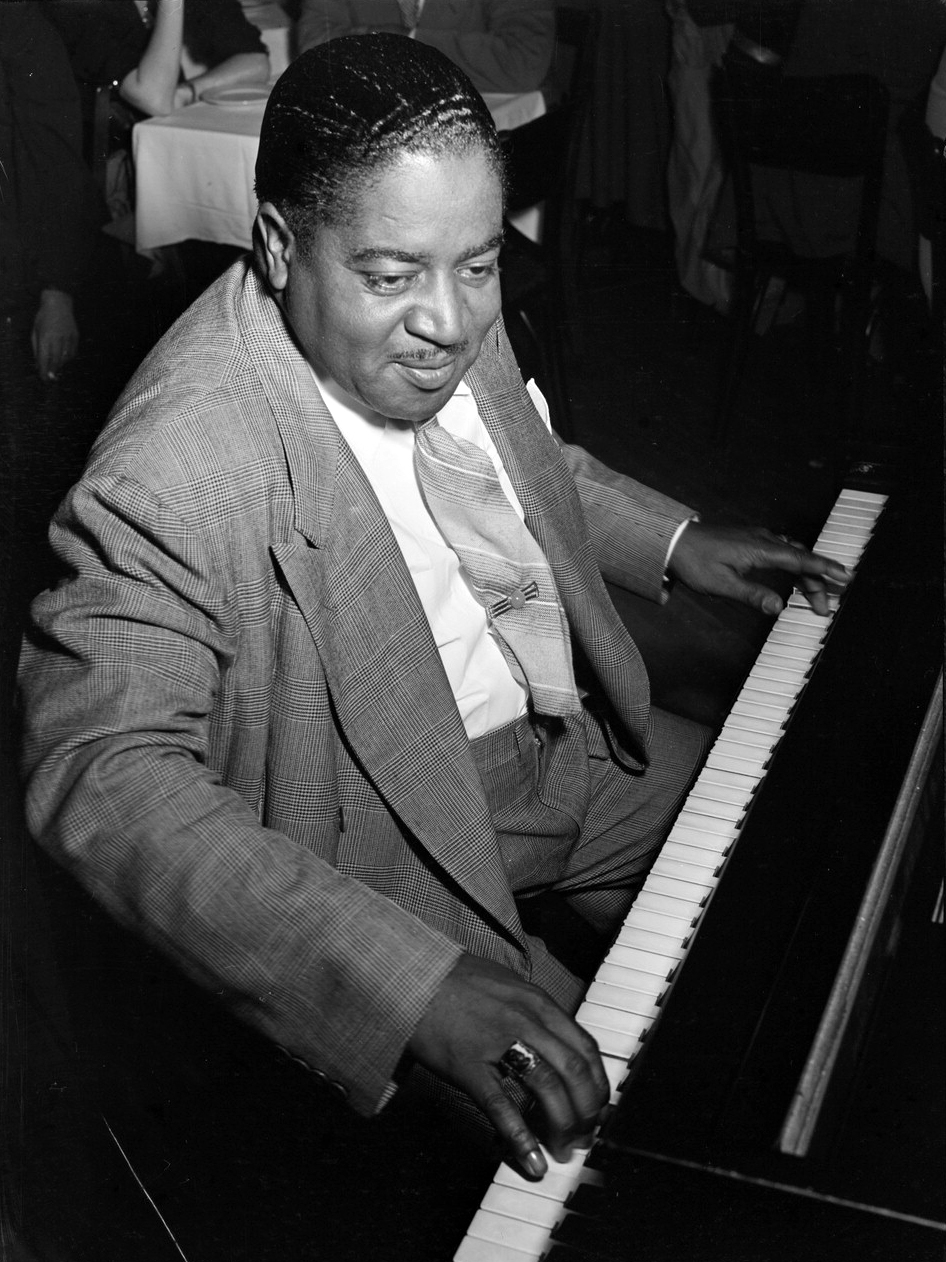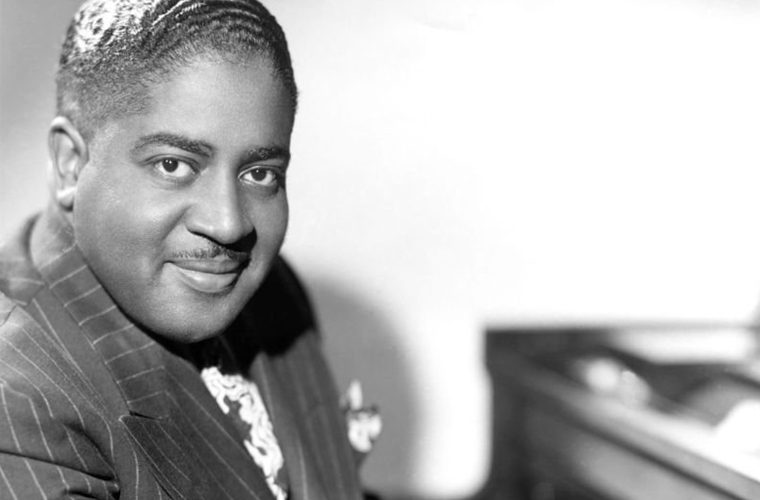Pete Johnson began his musical career in 1922 as a drummer in Kansas City, Missouri. From 1926 to 1938 he worked as a pianist, often accompanying singer Joe Turner. In 1938 he and Turner appeared in the Spirituals to Swing concert at Carnegie Hall. This concert started a boogie-woogie craze, and Turner and two other performers at the concert, Meade Lux Lewis and Albert Ammons became the foremost champions of this genre.
Pete Johnson is the foremost exponent of the “Kansas City boogie-woogie style”. This is in contrast to his colleagues of the Boogie Woogie Trio, Albert Ammons, and Meade Lux Lewis from Chicago, whose main influences were Jimmy Yancey, Pinetop Smith, Hersal Thomas, Clarence Lofton, and Jimmy Blythe. Meade Lux Lewis played a harmonic and rhythmic system all of his own, whereas Albert Ammons relied heavily on his powerful touch and a swing-to-perfection which enabled him to emulate a Fats Waller-like rhythmic tension. Pete Johnson was different. Although employing the physical approach of a mainly self-taught player to the keyboard, when he played blues and boogie-woogie, was an advantage. He was a player who had good knowledge of harmonics, and structures, great command of rhythm, and plentiful experience in swinging along with high-caliber jazz musicians.

Pete Johnson’s recording legacy goes back to 1938 when he began laying down his distinctive piano style on the Document label. He backed blues shouter Big Joe Turner, and they did sessions together as far as 1955, which are available on various labels. There are compilations of his work with the “Boogie Woogie Trio,” as well as his solo efforts. He went on to record for Storyville, Savoy, Brunswick, Riverside, Apollo, and Blue Note.
In 1950 he moved to Buffalo, New York but, despite problems with his health, continued to tour and record, notably with Jimmy Rushing, Turner, and Jazz at the Philharmonic. He toured Europe on a brief tour in 1958. Although he was not feeling well that year it was an opportunity he wouldn’t pass up, and there was a possibility the publicity would help. He took off for Europe with his old friend Joe Turner among the other entertainers, in Europe there was always a capacity audience. His last performance was at the Newport Jazz Festival. He returned to Buffalo where he became ill with a heart condition and diabetes, followed by several strokes.


